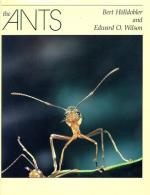
|
| Name: _________________________ | Period: ___________________ |
This test consists of 15 multiple choice questions and 5 short answer questions.
Multiple Choice Questions
1. Who coined the term "social insects"?
(a) Morton.
(b) Wheeler.
(c) Holldobler.
(d) Wilson.
2. Which of the following is NOT a criterion used to decide that an ant colony is a unit rather than a group of individuals?
(a) It undergoes an adaptive cycle of growth.
(b) It is precise in execution of planned actions.
(c) It shows idiosyncrasies in behavior, size, and structure.
(d) It differentiates into germ plasma.
3. Which of the following is NOT a factor distracting from optimal foraging within an ant colony?
(a) Weather.
(b) Predators.
(c) Accidents.
(d) Competition.
4. Who removes a newly fertilized queen ant's wings?
(a) She removes them herself.
(b) Her young remove them.
(c) Her partner removes them.
(d) Her wings dissolve after fertilization.
5. Which of the following is NOT one of the ways biomass is measured?
(a) Drying.
(b) Collecting.
(c) Photographing.
(d) Weighing.
6. What is the colloquial name for the ant species "Paratrechina longicornis"?
(a) Ugly ants.
(b) Crazy ants.
(c) Fat ants.
(d) Timid ants.
7. Which of the following is NOT a category that authors Holldobler and Wilson claim to be extremely complex in ant colonies?
(a) Their behavior.
(b) Their communication.
(c) Their social organization.
(d) Their anatomy.
8. Which of the following worlds does Wilson claim that ants run?
(a) The coastal world.
(b) The terrestrial world.
(c) The aquatic world.
(d) All of the above.
9. How do ants communicate?
(a) Through chemical emissions.
(b) Ants do not communicate.
(c) Through antennae movement.
(d) Through a complex pattern of squeaks.
10. Which of the following elements was brought by ants to the Amazon rainforest?
(a) Sulfur.
(b) Formic acid.
(c) Coal dust.
(d) Gold filaments.
11. At what university were radioactive ants found in the 1960s?
(a) Princeton.
(b) Harvard.
(c) Yale.
(d) Columbia.
12. What is modulatory communication?
(a) Communication for the purpose of reproduction.
(b) Communication to the queen.
(c) Communication meant to alter another's behavior.
(d) Communication in regards to alien attack.
13. How long is the desert ant's life expectancy?
(a) 6 days.
(b) 26 days.
(c) 16 days.
(d) 36 days.
14. What gender of ants typically makes up an ant colony?
(a) Colonies are split between male and female ants.
(b) Colonies are mostly female.
(c) Colonies are mostly sexless.
(d) Colonies are mostly male.
15. Which of the following groups within an ant colony produces the strongest identification odor?
(a) Worker ants.
(b) Larvae ants.
(c) Sexually mature ants.
(d) Queen ants.
Short Answer Questions
1. How many times their own body weight do Idaho harvester ants retrieve during their lifetime?
2. How much of the Amazon rainforest is composed of ants and other insects?
3. Which of the following is NOT a method of communication used by ant species?
4. What is the focus of the Ergonomic Stage of an ant colony?
5. Which of the following scientists pointed out that colonies of social insects tend to be more harmonious when the members are all closely related?
|
This section contains 458 words (approx. 2 pages at 300 words per page) |

|




